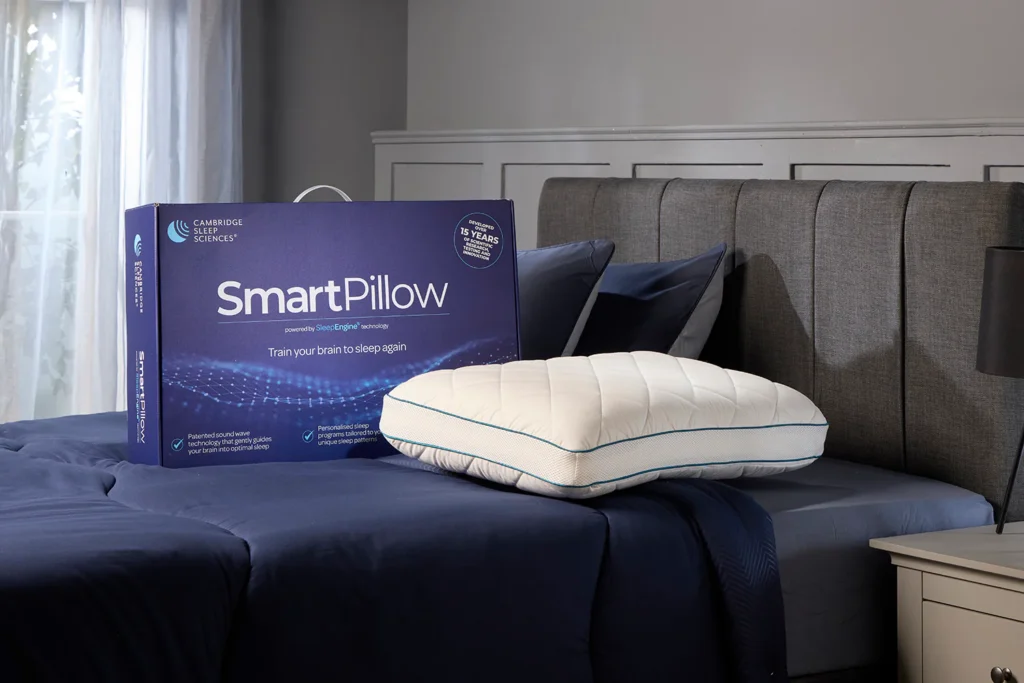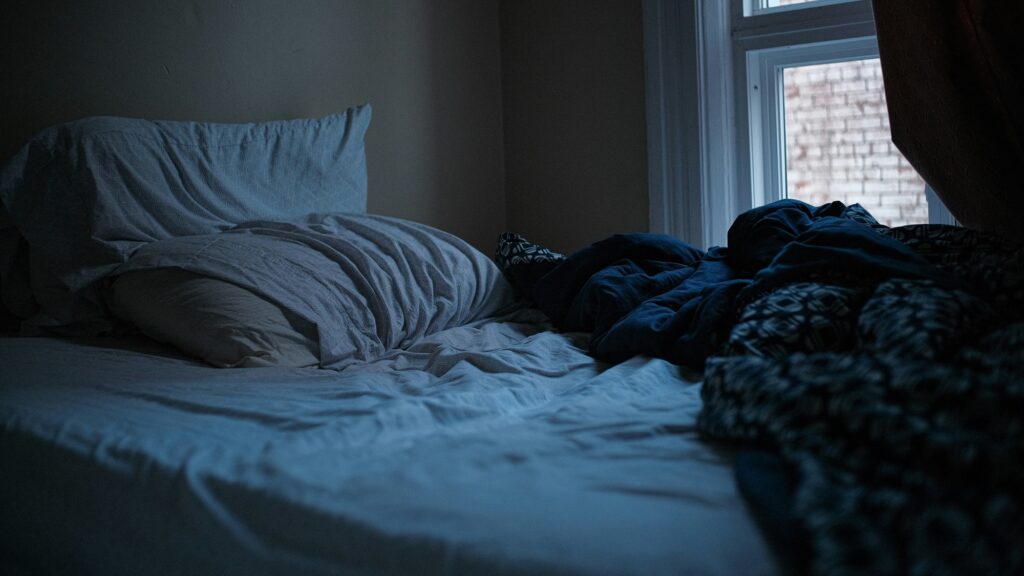Deep sleep, also known as slow-wave sleep, is the most restorative phase of the sleep cycle.
It’s during this stage that your body repairs muscle tissue, regulates hormones, and clears out cellular waste in the brain. (PMID: 24136970)
But some people struggle to get enough, and that can show in the results of your sleep tracker. And that can be frustrating – especially if you’re inherently a light sleeper.
Over time, a lack of deep sleep has been linked to everything from poor metabolic health to memory loss, low immunity, and accelerated aging.
In this guide, we’ll break down why deep sleep matters, how much you actually need, and five science-backed ways to improve it — even if you’re a chronically light sleeper.
Why deep sleep matters
To understand how to get more deep sleep, we need to understand what happens in each stage of the sleep cycle:
- Stage 1 (NREM): Light sleep. Heart rate and brain activity slow.
- Stage 2 (NREM): Deeper light sleep. This is where sleep spindles occur.
- Stage 3 (NREM): Slow-wave sleep — the true deep sleep stage. This is when tissue repair, glucose regulation, and memory consolidation take place.
- Stage 4 (REM): Dream-heavy sleep, marked by rapid brain activity and muscle paralysis.
Deep sleep (stage 3) is where your body does its most important work — hormone release, cellular cleanup, and neural pruning. Without enough of it, your metabolic and cognitive systems take a hit.
Age, sex and spindles

Sleep fragmentation – the scientific term for broken or disrupted sleep – is a major driver of daytime fatigue and cognitive sluggishness.
It’s not always easy to pinpoint its cause. Environmental triggers, poor bedtime habits, and underlying conditions like insomnia can all play a role. But one factor that consistently emerges in the research is the role of sleep spindles.
Read our full guide to the anti-aging power of sleep
Sleep spindles are rapid bursts of brainwave activity that occur during stage 2 of non-REM sleep. These bursts act like neurological noise-canceling headphones, helping the brain suppress external disturbances like light or sound. The more sleep spindles you generate, the more resilient your sleep tends to be. But here’s the catch: spindle activity declines with age, and so does deep sleep.
In older adults, not only does spindle density drop, but so does the time spent in slow-wave sleep — the deepest, most restorative sleep stage. This is the phase responsible for memory consolidation, tissue repair, glucose metabolism, and growth hormone release. The reduction in both spindle activity and deep sleep may explain why aging is often associated with lighter, more fragmented sleep.
Men, women and deep sleep
Sex differences also matter. Women generally get more deep sleep than men — particularly in early adulthood — but this advantage isn’t stable across the menstrual cycle.
Deep sleep tends to decline during the luteal phase (the second half of the cycle, after ovulation), when progesterone levels are high and core body temperature rises. Both factors can increase sleep fragmentation and reduce time spent in slow-wave sleep. [Women vs Men Sleep]
In other words, deep sleep isn’t just a function of environment or habit — it’s also shaped by biological sex, hormonal rhythms, and the passage of time.
That’s why understanding your body’s natural sleep architecture — and where it may be breaking down — is a critical first step to fixing it.
Read our full guide to women and sleep.
5 ways to get more deep sleep

These strategies won’t change your biology overnight, but they can shift your sleep architecture over time in your favor.
1. Stick to a sleep schedule
Consistency strengthens your circadian rhythm — the internal clock that regulates sleep–wake cycles. Going to bed and waking up at the same time every day, including weekends, improves your body’s ability to enter deep sleep more efficiently. This rhythm is also tied to hormone timing, glucose regulation, and even inflammation control.
→ Pro tip: Aim for a bedtime in the 10–11 pm window. Sleep that aligns with your natural melatonin surge tends to be more restorative. (PMID: 36713092)
2. Build a wind-down routine
A relaxing pre-bed ritual tells your brain it’s time to shift gears. Avoid anything mentally stimulating — yes, even that one “quick” episode — and focus on low-arousal activities: a hot shower, light stretching, or reading under dim light. The key is repetition. Over time, these cues build strong associations with sleep onset.
→ Skip screens. Even with Night Shift enabled, your phone still emits blue light that suppresses melatonin. If you must use screens at night, consider blue-light blocking glasses that filter blue wavelengths.
3. Control your environment
Your bedroom should be optimized for sleep, not multitasking. Use blackout curtains or an eye mask to keep light out — even low-level light can suppress melatonin. Consider white noise or earplugs to buffer against city sounds. Temperature matters too: the ideal range for sleep is between 60–67°F (15.5–19.5°C).
4. Rebuild your sleep hygiene
Avoid caffeine after 2 pm, steer clear of heavy meals or alcohol within three hours of bedtime, and ditch the habit of doomscrolling before bed. These aren’t just rules of thumb – they’re tied to measurable shifts in deep sleep duration and sleep latency.
Read more: The science behind sleepmaxxing trends
5. Reserve your bed for sleep
Working, scrolling, or even reading in bed during the day can weaken your brain’s association between bed and sleep. That makes it harder to fall asleep quickly — and to stay asleep once you’re there.
Summary
You can’t force your brain to produce more sleep spindles — and you may never fully stop waking at the sound of a pin drop — but you can create the conditions for better deep sleep. Start with the basics: a consistent schedule, a calming wind-down, a cool and dark room, and clean sleep habits.
If you’re still waking up tired, consider tracking your sleep stages, light exposure, and bedtime behaviors over time. The patterns might surprise you.








